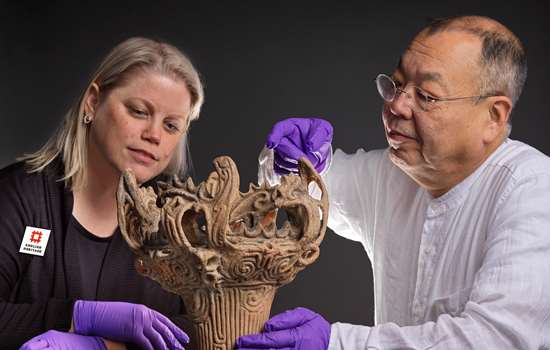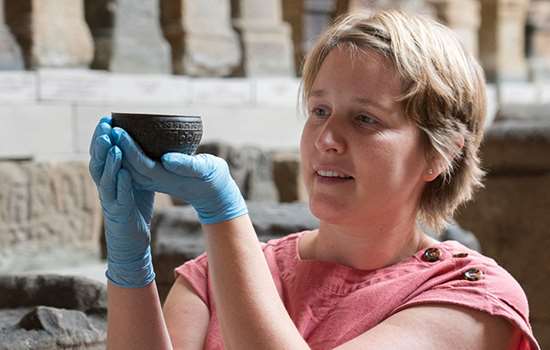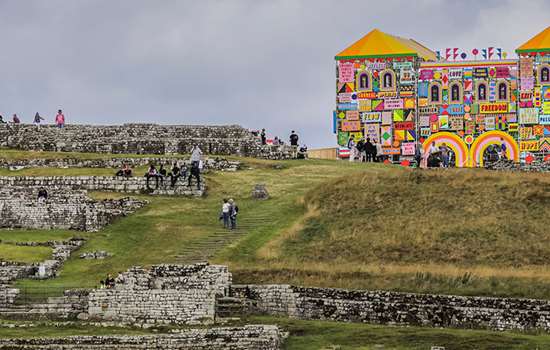18/12/2019
Medieval Christmas treasures
A newly analysed and transcribed manuscript reveals a rare list of Battle Abbey relics
A medieval manuscript listing relics once housed at Battle Abbey in East Sussex has been newly analysed to reveal festive gifts bestowed by William the Conqueror and holy offerings by King John.
Dating from the mid-15th century, the extensive list is one of only 30 or so relic inventories to still survive from medieval England and mentions 175 individual relics.
From what was believed to be the manger where Christ was born, to the hair shirt and finger bone of Saint Nicholas (the original Santa Claus) the relics housed at Battle Abbey were some of the most prestigious objects gifted to any abbey in England, some more significant even than those given to Westminster Abbey.
Dr Michael Carter, English Heritage Historian, said:
'The collecting and cherishing of relics was an important aspect of medieval monasticism and I am thrilled to think that I could have been the first person in over 500 years to study the glorious list from Battle Abbey in detail.
'It’s fascinating how connections to our Christmas today, can be traced back almost a thousand years and despite Henry VIII’s violent suppression, these great monasteries are still giving up their secrets.
'There’s no greater endorsement than a King giving a gift of relics so this list reveals just how significant a place Battle Abbey was. William the Conqueror alone, gave far more to Battle Abbey than any other abbey in England, illustrating just how important the site of his victory at the Battle of Hastings remained.'
Seasonal highlights transcribed from the inventory include:
- Relics from the ground where Christ was born
- Relics from the manger
- Relics from the crib
- Relics from the swaddling
- Relics from the bed the Virgin was lying in when he was born
- Hair shirt and finger bone of Saint Nicholas obtained possibly by the Battle monks themselves in 1089 when the Saint’s relics were moved to a shrine in Italy
- Stones used to stone St Stephen (his feast day is 26 December, Boxing Day)
- Relics of several of the Holy Innocents killed on the orders of King Herod (feast 28 December) thought to have been part of the William the Conqueror’s gift
The quality, range and quantity of the relics indicate William the Conqueror’s favouritism for the abbey he founded, on the site of his victory at the Battle of Hastings in 1066.
He was a notorious Scrooge when it came to giving gifts to English abbeys, but Battle was an exception. Other gifts were given by King John when he visited the abbey in 1200 and presented the monks with the very holiest relics of the Holy Sepulchre (Christ’s tomb) and True Cross (the very cross on which Christ suffered and died).
To the medieval mind, these had excellent provenance collected by his brother King Richard the Lion Heart had obtained while on Crusade in the Holy Land.
Dr Michael Carter’s research is published in The Journal of Medieval Monastic Studies, December 2019.
The manuscript is housed within The Huntington Library, Art Museum, and Botanical Gardens in California, USA.
Plan your visit to 1066 Battle of Hastings, Abbey and Battlefield.
For more from English Heritage, follow us on Facebook, Twitter and Instagram.



